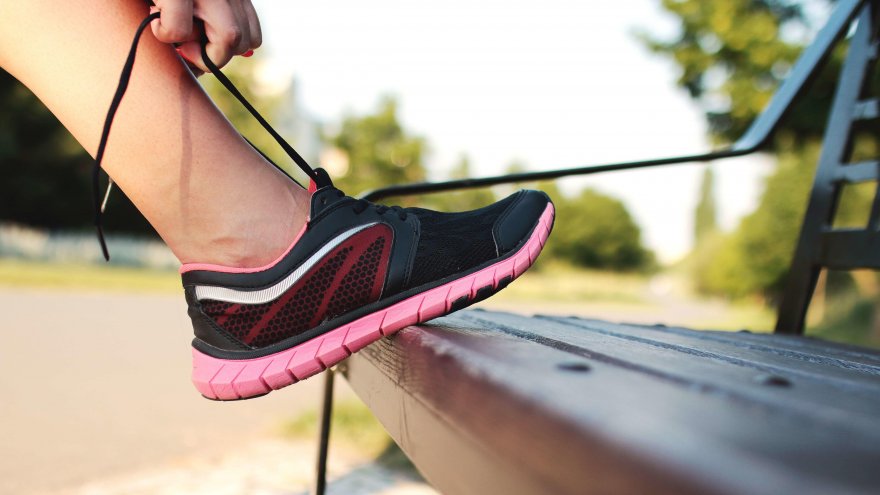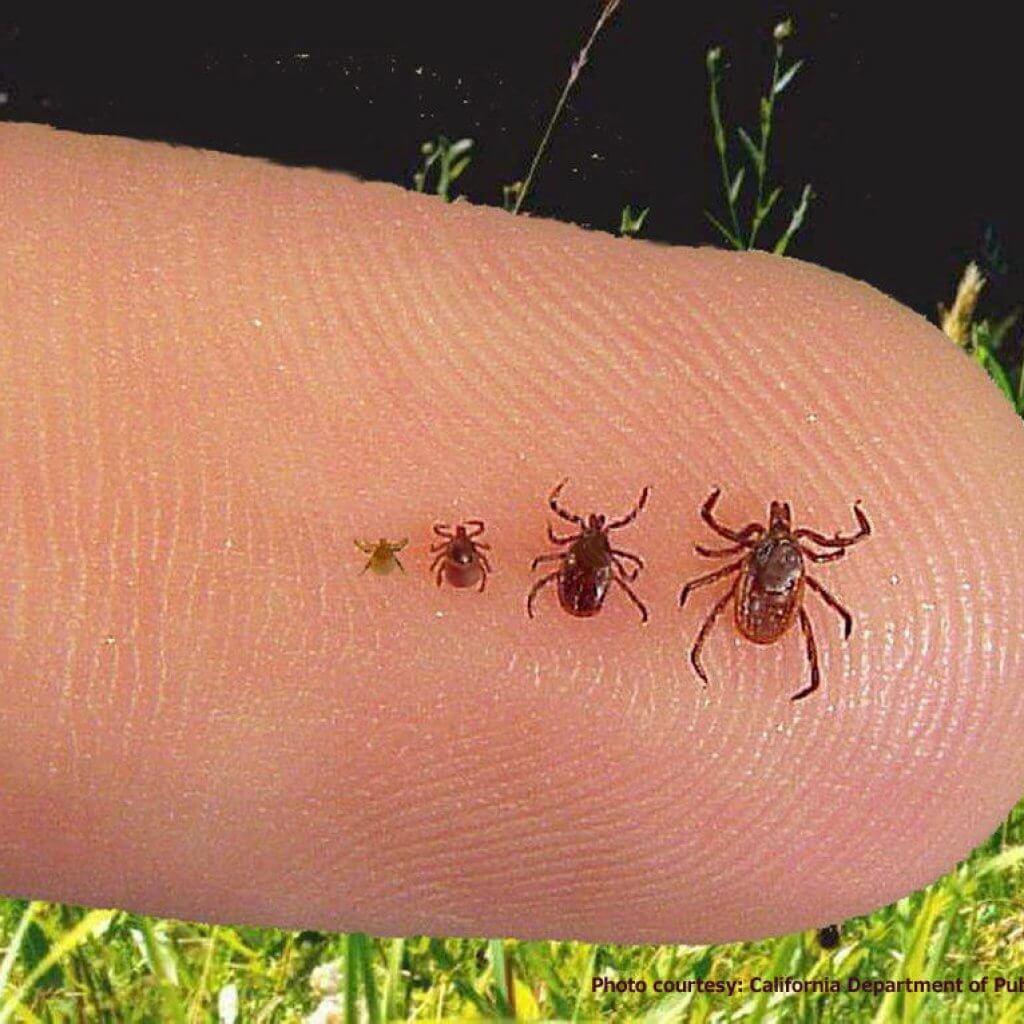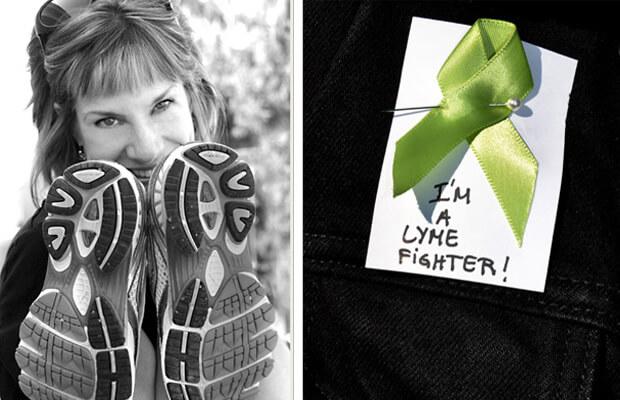Running With Lyme Disease

When I was 17, I spent two weeks in Montana at a cross-country running camp. When I returned home to Alaska, I had a long bout of flu-like symptoms and a mysterious rash. I began to experience extreme fatigue and doctors thought I had mono, but the test was negative.
That trip was the changing point in my life, and the start of a 17-year battle with unexplained chronic fatigue, muscle aches and pain, headaches, chills and fevers, brain fog, gastrointestinal dysfunction, and neurological symptoms. Living in Alaska, nobody ever mentioned the word “Lyme” or considered testing me for it. The belief was that the disease did not exist outside of areas on the east coast of the United States.
It was not until I’d seen hundreds of doctors that one finally decided to test me for it. Not only did I have Lyme, but I also tested positive for a dozen opportunistic co-infections that commonly develop in a chronically immunosuppressed host.

Lyme Disease is now appreciably at “epidemic” levels, and there are over 300,000 new cases every year in the United States. Chronic cases of Lyme Disease are widely unrecognized or unacknowledged by mainstream medical doctors and it’s tricky at best to detect on traditional testing, which is a controversial topic.
Lyme Disease is an infectious disease caused by different bacterial variants of the Borrelia species. The bacterium is spread to humans through the bite of an insect. The symptoms experienced by people with Lyme are not actually the effects of the bacteria themselves, but rather the immune system fighting the infection. Some believe that almost everybody has been exposed to Lyme at some point, but it’s the people who have weakened immune systems, stressful life events or genetic susceptibility that end up developing the disease.
Let’s debunk some myths about Lyme Disease:
- “The tick is the only insect that carries Lyme” is false. Other insects including fleas, spiders, mites and mosquitoes have been found to carry the disease.
- “Lyme transmission is only possible in certain states in the U.S.” is also incorrect. Deer carrying Lyme that transmit it to ticks have been found in the reaches of northern Canada and on the west coast of the U.S. No area is “safe.”
- “Lyme disease occurs in isolation” is another myth (in general). Most patients have a plethora of co-infections of other vector-borne illnesses that are also carried on insects. Once the immune system is suppressed, the host is much more susceptible to additional threats. Many patients with Lyme also have Babesia, Bartonella, Ehrlichia, Mycoplasma, and other infections.
- “Patients will have the bulls-eye rash” is actually not a classic finding. One study found that only 27% of patients had the rash. A 2014 study found that 40% present with it.
- “Antibiotics alone can eradicate chronic Lyme” is also often a false statement. While certain antibiotics may be effective when someone is in the acute phase, once the disease has become chronic there is often a very comprehensive multi-faceted treatment approach that becomes necessary outside the scope of one month of prescription antibiotics.
- “You can’t get Lyme Disease in cold climates” is an incorrect statement. Deer ticks can live in very cold climates and survive through the winter, with a lifespan of two years.

Lyme Disease and Runners
There are a number of famous runners who have suffered from this silent and invisible disease. Elite runner Ben True developed symptoms of Lyme Disease as he was preparing for the 2012 Olympic Trials. Fortunately, they caught his case early and he responded well to antibiotics.
Angela Coloumbe was diagnosed with Lyme Disease in 2007. Her case was chronic, and despite still being plagued by symptoms, she began entering more running races with the logic that running couldn’t hurt any more than the pain of the disease itself that she was already experiencing. Angela began to run marathons in order to promote advocacy and awareness of the disease and to support research efforts. She competed in the Boston Marathon in 2014.
Many athletes incorrectly attribute the symptoms of Lyme to over-training. Muscle and body aches and pains of Lyme can certainly mimic post-workout muscle symptoms. It’s highly likely that a number of runners out there are pushing through the symptoms completely unaware of their origin.

This was certainly true in my case. I, like Angela, used running as a way to persevere despite being plagued with debilitating unexplained symptoms. Running was my “escape” and a welcome mental distraction from the other types of pain I was experiencing. Often-times I pushed it way too hard and it took weeks to recover. There were many days where I felt I could not get out of bed, but I also realized that if I didn’t “use it” I would “lose it,” so I forged ahead despite daily challenges for things as simple as taking a shower to get ready for work.
In essence, running while living with Lyme Disease truly saved my life. The anxiety and depression that go hand in hand with the disease were very much a present reality, and getting outside for trail runs and hikes provided me with brief windows to ease the mental pain and moments to connect to my inner spirituality without the chaos and noise of daily life.
There are so many benefits to running as a key component to holistic management of the disease, as long as it’s approached in the right quantity and quality. Above all, listening to your body and accepting whatever reality the day may bring is an important lesson for sufferers of Lyme Disease. While the “Type A” in many of us wants us to prepare for races with strict mileage logs and training plans, living with Lyme has taught me to take it one day at a time, with less pressure on myself for those concrete milestones in training, an acceptance of the many things I cannot control or predict, and more joy and presence in the moment.
Sources
Latest Articles
 Is Running on a Treadmill Easier Than Running Outside?Runners have their own preferences, whether it is treadmill running, running outside on the road, or exploring trails. So...
Is Running on a Treadmill Easier Than Running Outside?Runners have their own preferences, whether it is treadmill running, running outside on the road, or exploring trails. So... Is It OK to Use Trail Running Shoes on the Road?While trail running shoes can be used on roads, especially in situations where a runner encounters mixed terrains or pref...
Is It OK to Use Trail Running Shoes on the Road?While trail running shoes can be used on roads, especially in situations where a runner encounters mixed terrains or pref... How to Fix Sore Quads After Running?Rest, ice, gentle stretching, and over-the-counter pain relievers can help soothe sore quads after running. Also, ensure ...
How to Fix Sore Quads After Running?Rest, ice, gentle stretching, and over-the-counter pain relievers can help soothe sore quads after running. Also, ensure ... 10 Fruits With The Most Electrolytes to Replace Sports DrinksThese fruits are high in electrolytes such as potassium, magnesium, and calcium, essential for hydration, muscle function...
10 Fruits With The Most Electrolytes to Replace Sports DrinksThese fruits are high in electrolytes such as potassium, magnesium, and calcium, essential for hydration, muscle function...

